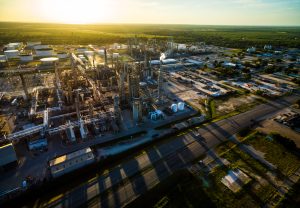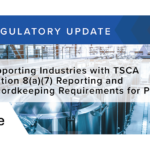
Environmental site assessments play a crucial role in evaluating the potential contamination risks associated with a particular property or piece of land. In North Richland Hills, Phase 2 assessments are especially important in providing a comprehensive understanding of the environmental conditions of a site. This article aims to explore the various aspects of Phase 2 environmental site assessments in North Richland Hills, including their definition, purpose, key components, process, regulatory framework, impact, and future directions.
Understanding Phase 2 Environmental Site Assessments
Definition and Purpose of Phase 2 Assessments
Phase 2 environmental site assessments are in-depth investigations conducted to confirm or refute the presence of contaminants that may impact human health and the environment. Unlike Phase 1 assessments, which are preliminary evaluations, Phase 2 assessments involve actual sampling and laboratory analysis to obtain quantitative data regarding potential contaminants.
The purpose of Phase 2 assessments is to identify the extent and severity of contamination, assess potential risks, and determine the necessary remediation measures. These assessments are typically triggered by the findings of Phase 1 assessments, which indicate the likelihood of contamination.
Key Components of Phase 2 Assessments
In a Phase 2 environmental site assessment, several key components are involved to gather comprehensive data on the site conditions. These components include soil sampling, groundwater sampling, surface water sampling, air quality sampling, and building material sampling. Each of these components provides valuable insights into the presence and concentration of contaminants.
Soil sampling involves the collection of soil samples from various locations on the site to analyze for contaminants such as heavy metals, petroleum hydrocarbons, and pesticides. Groundwater sampling, on the other hand, focuses on the collection of water samples from wells or monitoring points to determine the presence of contaminants that could potentially migrate into the groundwater.
Surface water sampling evaluates the quality of nearby surface water bodies, such as rivers or lakes, to assess the impact of site contamination on these resources. Air quality sampling examines the presence of volatile organic compounds (VOCs) or other airborne contaminants that may pose inhalation risks. Lastly, building material sampling focuses on identifying any potential hazards associated with construction materials, such as lead-based paint or asbestos.
The Process of Phase 2 Environmental Site Assessments in North Richland Hills
Initial Site Inspection and Sampling
The first step in conducting a Phase 2 assessment in North Richland Hills is to perform an initial site inspection. This involves assessing the physical characteristics of the site, such as topography, geology, and hydrogeology. Additionally, professionals will conduct a visual examination of the property to identify potential contamination sources, such as underground storage tanks or industrial facilities.
Following the initial site inspection, sampling takes place. Samples are carefully collected based on predetermined sampling plans, which consider factors such as the size of the property, historical land use, and potential contamination sources. Proper sampling techniques, such as using clean, uncontaminated equipment and following specific protocols, ensure the reliability of the data obtained.
Laboratory Analysis and Data Interpretation
Once the samples are collected, they are sent to accredited laboratories for analysis. The laboratory analysis aims to determine the concentration of specific contaminants present in the samples. Advanced analytical techniques, including gas chromatography and mass spectrometry, are used to identify and quantify contaminants accurately.
After the laboratory analysis, the data obtained from the samples is interpreted and compared to applicable regulatory standards and guidelines. This allows professionals to assess the extent and severity of contamination and evaluate the potential risks posed by the identified contaminants.
Regulatory Framework for Environmental Site Assessments
Federal and State Environmental Laws
Environmental site assessments, including Phase 2 assessments, are governed by a range of federal and state environmental laws in North Richland Hills. These laws outline the obligations and responsibilities of property owners and developers in assessing and remediating contaminated sites.
At the federal level, laws such as the Comprehensive Environmental Response, Compensation, and Liability Act (CERCLA) and the Resource Conservation and Recovery Act (RCRA) provide the legal framework for environmental site assessments. Additionally, state-specific laws and regulations, such as the Texas Risk Reduction Program, guide the assessment and remediation processes within North Richland Hills.
Compliance and Enforcement in North Richland Hills
The City of North Richland Hills has established compliance and enforcement measures to ensure the adherence to environmental laws and regulations. These measures aim to safeguard public health, protect the environment, and promote responsible development practices.
Property owners and developers are required to obtain permits and approvals before conducting Phase 2 assessments and any subsequent remediation activities. Failure to comply with the regulatory requirements can result in penalties, fines, or other enforcement actions to rectify the non-compliance.
Impact of Phase 2 Environmental Site Assessments
Implications for Property Owners and Developers
Phase 2 environmental site assessments have significant implications for property owners and developers in North Richland Hills. The identification of contamination can lead to delays in property development, financial liabilities, and potential legal consequences.
Property owners may be required to remediate the site to mitigate the identified contamination and ensure compliance with environmental laws. This can involve costly cleanup measures, such as soil excavation, groundwater treatment, or the installation of containment systems.
Benefits for the Community and Environment
While Phase 2 assessments can present challenges for property owners and developers, they ultimately contribute to the protection of the community and the environment. By identifying and remediating contamination, these assessments help prevent potential exposure to hazardous substances, protecting public health and ensuring the long-term sustainability of the surrounding ecosystem.
Moreover, the remediation of contaminated sites can revitalize previously unusable land, allowing for sustainable development and enhancing the overall quality of life in North Richland Hills.
Future Directions for Environmental Site Assessments
Technological Advancements in Site Assessments
The field of environmental site assessments is continuously evolving, driven by advancements in technology. Innovations such as remote sensing, advanced analytical techniques, and data visualization tools are enhancing the efficiency and accuracy of site assessments.
Remote sensing technologies, including aerial surveys and satellite imagery, provide a cost-effective means of identifying potential contamination sources and assessing site conditions. Advanced analytical techniques, such as high-throughput screening and molecular diagnostics, enable faster and more precise analysis of samples. Additionally, data visualization tools help professionals interpret and communicate complex assessment results in a more accessible manner.
Policy Changes and Their Potential Impact
Changes in environmental policies and regulations can significantly impact the future of environmental site assessments. Policy shifts towards increased focus on sustainability, climate change, and social responsibility may influence the scope and requirements of future assessments.
For instance, emerging policies promoting sustainable remediation practices and requiring the consideration of climate change impacts could shape future assessments in North Richland Hills. These changes may necessitate additional evaluations, such as assessing renewable energy options or integrating climate resilience measures into the assessment process.
In conclusion, Phase 2 environmental site assessments are essential components of evaluating and managing the environmental risks associated with properties in North Richland Hills. These assessments provide a comprehensive understanding of site conditions, facilitate informed decision-making, and contribute to the protection of public health and the environment. As technology advances and policies evolve, the field of environmental site assessments in North Richland Hills will continue to adapt, ensuring the sustainable development of the city for future generations.
If you’re facing environmental challenges or require a Phase 2 Environmental Site Assessment in North Richland Hills, look no further than ESE Partners. Our team of expert environmental engineers and scientists is dedicated to responsibly moving your business forward through comprehensive environmental problem-solving. With offices in Dallas-Fort Worth and a strong presence in major Texas markets, we’re equipped to provide you with timely, quality-driven results that not only meet regulatory obligations but also contribute to the community’s quality of life. Let us help you navigate the complexities of environmental assessments with innovative and sustainable solutions. Request A Proposal! today and partner with ESE Partners for your environmental consulting needs.








